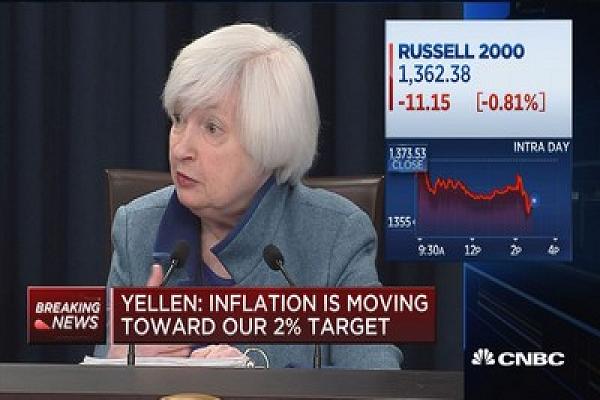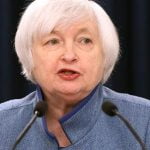Federal Reserve chair Janet Yellen is trying to pull off a neat trick: Convincing the world that more rate hikes were warranted while not rocking the markets too much.
The Fed had a delicate balancing act, which includes acknowledging the following:
1) That the economy continues to improve (they did, though they made no dramatic change in the economic assessment);
2) That inflation was a bit hotter, but not much—something they did by acknowledging that market-based measures of inflation had moved up “considerably but still are low” (“considerable” was a new add).
3) Tread carefully on the “Trump rally” and the talk of massive stimulus, while sidestepping how both might impact Fed policy.
Two-and five-year Treasury yields have moved up. That is not surprising, since the policy-setting Federal Open Market Committee (FOMC) participants view of interest rate hikes (the so-called “dot-plot) indicates three rate hikes are likely in 2017, up from two previously.
Stocks have weakened going into the close, but given the increase in rate hikes and the enormous move in stocks in the last month, this is a very modest move. The Dow Jones Industrial Average closed modestly lower after Yellen finished her conference.
Still, think about how modest this rate move is. If a year ago the Fed would have in any way implied that there would be more rate hikes than the market expected, the Dow could easily have been down more than 400 points in 20 minutes.
In her press conference, she was asked repeatedly if the Fed was behind the curve. While acknowledging that monetary policy remains accommodative, she insisted inflation was still below their projections, and that that there were no indications of extreme shortages of labor that would push prices higher.
When asked why the majority had elevated their projections, she said that a number of factors had been taken into account, including a lower unemployment rate and a slight upward revision to inflation.
On the crucial question of whether the Trump rally had influenced anyone in changing their projections for a rate hike, she acknowledged that “some but not all participants” incorporated some assumption of change in fiscal policy into their projections, but insisted the shifts were “very tiny.”
To paraphrase in plain English: “We acknowledged all this fiscal stimulus talk, but we don’t know where it’s going to go, so most of us are holding off getting too hawkish.”
What’s ahead for stocks? I doubt this is an inflection point. Given the wild enthusiasm for stocks, it’s my opinion some will view this as opportunity to pick up a few beaten-up sectors tomorrow.




